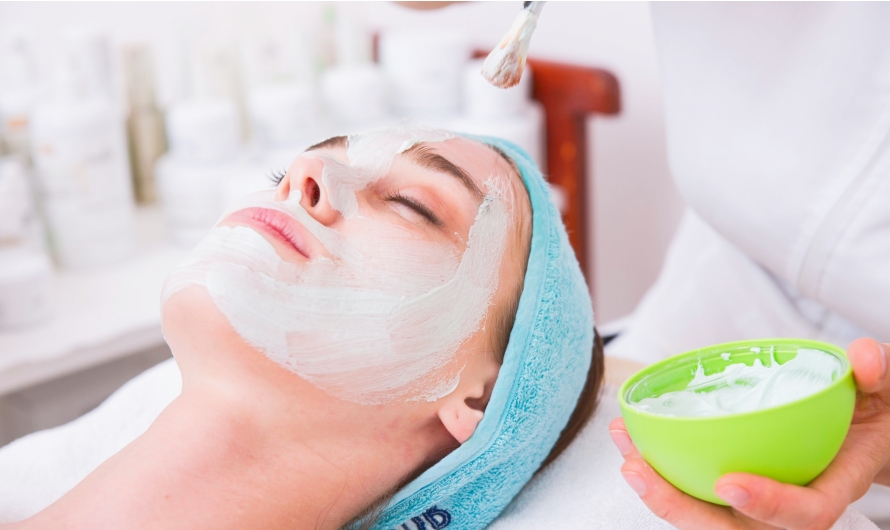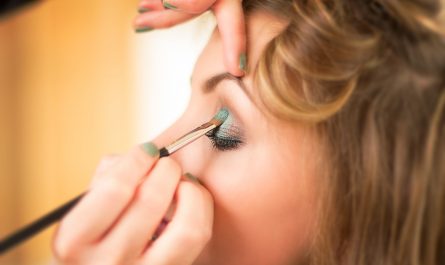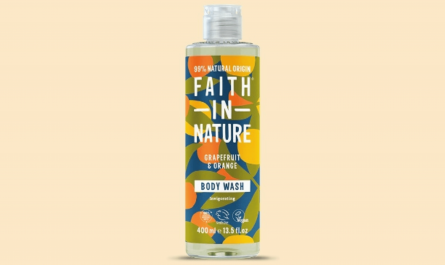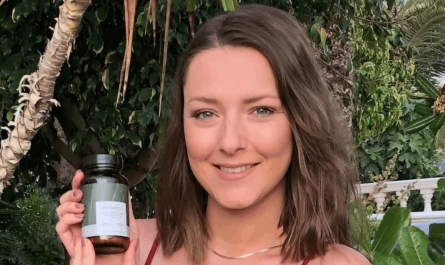Have you ever wondered what are those colorful sheets or pastes that people put on their faces? They are called facial masks, and they are one of the most popular skin care products nowadays. Facial masks are designed to deliver a high concentration of active ingredients to your skin in a short period of time, usually 10 to 20 minutes. They can help address various skin concerns, such as dryness, oiliness, dullness, aging, and more. They can also provide a relaxing and pampering experience for yourself at home or anywhere you want.
But with so many types and brands of facial masks available in the market, how do you know which one is right for you? How do you use them properly and safely? In this article, we will explore the benefits of using facial mask for your skin and how to choose the right one for you.
The Benefits of Using Facial Mask for Your Skin
Facial masks can offer many benefits for your skin, depending on the ingredients they contain and the format they come in. Here are some of the common benefits that facial masks can provide:
Hydrating and moisturizing the skin
One of the main benefits of using facial mask is to hydrate and moisturize your skin. This is especially important if you have dry or dehydrated skin, or if you live in a dry or cold climate. Hydrating and moisturizing facial masks can contain ingredients such as hyaluronic acid, glycerin, aloe vera, honey, avocado, shea butter, and more. These ingredients can help attract and retain moisture in your skin, making it plump, smooth, and soft.
Removing excess oils and impurities
Another benefit of using facial mask is to remove excess oils and impurities from your skin. This is especially helpful if you have oily or acne-prone skin, or if you are exposed to pollution or dirt. Removing excess oils and impurities can help prevent clogged pores, breakouts, blackheads, and whiteheads. It can also help balance your skin’s oil production and pH level. Some of the ingredients that can help remove excess oils and impurities are clay, charcoal, salicylic acid, benzoyl peroxide, tea tree oil, yogurt, papaya, and more. These ingredients can help absorb excess oils, draw out impurities, exfoliate dead skin cells, and kill bacteria.
Improving the appearance of your pores
Another benefit of using facial mask is to improve the appearance of your pores. This is especially beneficial if you have enlarged or visible pores, which can make your skin look rough or uneven. Improving the appearance of your pores can help smooth out your skin texture and tone. It can also help enhance the absorption and effectiveness of other skin care products. Some of the ingredients that can help improve the appearance of your pores are clay, charcoal, egg white, lemon juice, apple cider vinegar, cucumber, tomato, and more. These ingredients can help tighten and refine your pores, reduce inflammation, and brighten your skin.
Helping reduce signs of aging
Another benefit of using facial mask is to help reduce signs of aging, such as fine lines, wrinkles, sagging, and dullness. This is especially important if you have mature or aging skin, or if you want to prevent or delay the aging process. Helping reduce signs of aging can help restore your skin’s elasticity, firmness, and radiance. It can also help stimulate collagen and elastin production, which are essential for keeping your skin youthful and healthy. Some of the ingredients that can help reduce signs of aging are vitamin C, retinol, peptides, collagen, hyaluronic acid, antioxidants, rosehip oil, and more. These ingredients can help boost your skin’s regeneration, repair, and protection.
Pampering yourself and relaxing
Another benefit of using facial mask is to pamper yourself and relax. This is especially enjoyable if you want to treat yourself to some self-care or spa-like experience at home or anywhere you want. Pampering yourself and relaxing can help improve your mood, reduce stress, and enhance your well-being. It can also help you appreciate and love your skin more. Some of the ingredients that can help pamper yourself and relax are lavender, chamomile, rose, jasmine, vanilla, chocolate, coffee, and more. These ingredients can help soothe your senses, calm your mind, and uplift your spirit.
How to Choose the Right Facial Mask for You
Now that you know the benefits of using facial mask for your skin, how do you choose the right one for you? Here are some tips to help you make the best decision:
Know your skin type and concern
The first step to choosing the right facial mask for you is to know your skin type and concern. Your skin type is determined by how much oil your skin produces and how sensitive it is. There are four main skin types: normal, dry, oily, and combination. Your skin concern is what you want to improve or address on your skin. There are many possible skin concerns, such as acne, aging, dullness, sensitivity, dehydration, pigmentation, and more.
Knowing your skin type and concern can help you narrow down your options and find the most suitable facial mask for you. For example, if you have dry and dull skin, you may want to look for a hydrating and brightening facial mask. If you have oily and acne-prone skin, you may want to look for a purifying and anti-inflammatory facial mask.
Read the ingredients list carefully
The second step to choosing the right facial mask for you is to read the ingredients list carefully. The ingredients list tells you what the facial mask contains and what it can do for your skin. You should look for ingredients that match your skin type and concern, as well as avoid ingredients that may irritate or harm your skin.
Some of the ingredients that you may want to look for are:
- Hyaluronic acid: A humectant that attracts and retains moisture in your skin.
- Vitamin C: An antioxidant that brightens your skin and protects it from free radical damage.
- Clay: A natural mineral that absorbs excess oils and impurities from your skin.
- Salicylic acid: A beta hydroxy acid (BHA) that exfoliates dead skin cells and unclogs pores.
- Retinol: A derivative of vitamin A that stimulates collagen production and reduces signs of aging.
- Peptides: Short chains of amino acids that signal your skin to produce more collagen and elastin.
- Aloe vera: A plant extract that soothes inflammation and heals wounds.
- Tea tree oil: An essential oil that has antibacterial and anti-inflammatory properties.
Some of the ingredients that you may want to avoid are:
- Alcohol: A solvent that can dry out and irritate your skin.
- Fragrance: A synthetic or natural substance that can cause allergic reactions or sensitization.
- Parabens: A preservative that can disrupt your hormonal balance.
- Sulfates: A surfactant that can strip away your natural oils and moisture.
- Mineral oil: A petroleum-derived oil that can clog pores and cause breakouts.
Consider the mask format and usage
The third step to choosing the right facial mask for you is to consider the mask format and usage. The mask format refers to how the facial mask is presented or applied on your face. There are many types of mask formats available in the market, such as sheet masks, cream masks, clay masks, peel-off masks, gel masks, bubble masks,
and more.
The mask usage refers to how often and how long you should use the facial mask. This depends on the type of mask format as well as the instructions on the product packaging. Generally speaking,
- Sheet masks are thin sheets of fabric or paper soaked in serum or essence. They are easy to use and disposable. You should use them once or twice a week for 10 to 20 minutes.
- Cream masks are thick creams that nourish and moisturize your skin. They are suitable for dry or mature skin. You should use them once or twice a week for 15 to 30 minutes.
- Clay masks are pastes made of natural clay that purify and tighten your skin. They are suitable for oily or combination skin. You should use them once or twice a week for 10 to 15 minutes.
- Peel-off masks are gels or liquids that form a film on your skin and peel off when dry. They can help remove dead skin cells and impurities. They are suitable for normal or dull skin. You should use them once or twice a week for 10 to 20 minutes.
- Gel masks are gels that cool and soothe your skin. They are suitable for sensitive or inflamed skin. You should use them once or twice a week for 10 to 20 minutes.
- Bubble masks are foaming masks that oxygenate and cleanse your skin. They are suitable for all skin types. You should use them once or twice a week for 5 to 10 minutes.
You should choose the mask format and usage that suit your preference, convenience, and budget.
Test the mask on a small area first
The fourth step to choosing the right facial mask for you is to test the mask on a small area first. This is to make sure that you are not allergic or sensitive to any of the ingredients in the mask. You should apply a small amount of the mask on your inner wrist or behind your ear and wait for 24 hours. If you experience any redness, itching, burning, or swelling, you should not use the mask on your face.
Follow the instructions and precautions
The fifth and final step to choosing the right facial mask for you is to follow the instructions and precautions on the product packaging. You should read and follow the directions on how to apply, remove, and store the mask. You should also pay attention to any warnings or cautions on who should or should not use the mask, such as pregnant women, children, or people with certain medical conditions. You should also avoid using expired or damaged masks, as they may lose their effectiveness or cause infections.
Conclusion
Facial masks are great skin care products that can provide many benefits for your skin, such as hydrating, purifying, brightening, anti-aging, and relaxing. However, not all facial masks are created equal, and you need to choose the right one for you based on your skin type, concern, ingredients, format, usage, and safety. By following these tips, you can find the best facial mask for you and enjoy a healthy and glowing complexion.
FAQs
Q1: How often should I use a facial mask?
A1: The frequency of using a facial mask depends on the type of mask and your skin condition. Generally speaking, you should use a facial mask once or twice a week for optimal results. However, some masks can be used more often or less often depending on their ingredients and effects. For example, hydrating masks can be used daily if your skin is very dry, while exfoliating masks can be used once every two weeks if your skin is very sensitive.
Q2: Can I use different masks for different areas of my face?
A2: Yes, you can use different masks for different areas of your face if you have combination skin or multiple skin concerns. This is called multi-masking, and it can help you customize your skin care routine according to your needs. For example, you can use a clay mask on your T-zone to remove excess oils and a cream mask on your cheeks to moisturize them.
Q3: Can I reuse a facial mask?
A3: No, you should not reuse a facial mask unless it is specifically designed to be reusable. Most facial masks are meant to be used once and then discarded, as they may contain bacteria or lose their effectiveness after being exposed to air or moisture. Reusing a facial mask may cause infections or irritations on your skin.
Q4: What should I do after using a facial mask?
A4: After using a facial mask, you should rinse off any residue with lukewarm water and pat your face dry with a clean towel. You should then apply your usual toner, serum, moisturizer, and sunscreen to lock in the benefits of the mask and protect your skin from external factors.
Q5: Are facial masks safe for sensitive skin?
A5: Facial masks can be safe for sensitive skin if you choose the right ones and use them properly. You should look for facial masks that contain gentle and soothing ingredients such as oatmeal, aloe vera, chamomile, cucumber, etc., and avoid facial masks that contain harsh or irritating ingredients such as alcohol, fragrance, parabens, sulfates,
mineral oil, etc. You should also test the mask on a small area first and follow the instructions and precautions on the product packaging. If you experience any discomfort or adverse reaction, you should stop using the mask and consult your dermatologist.




